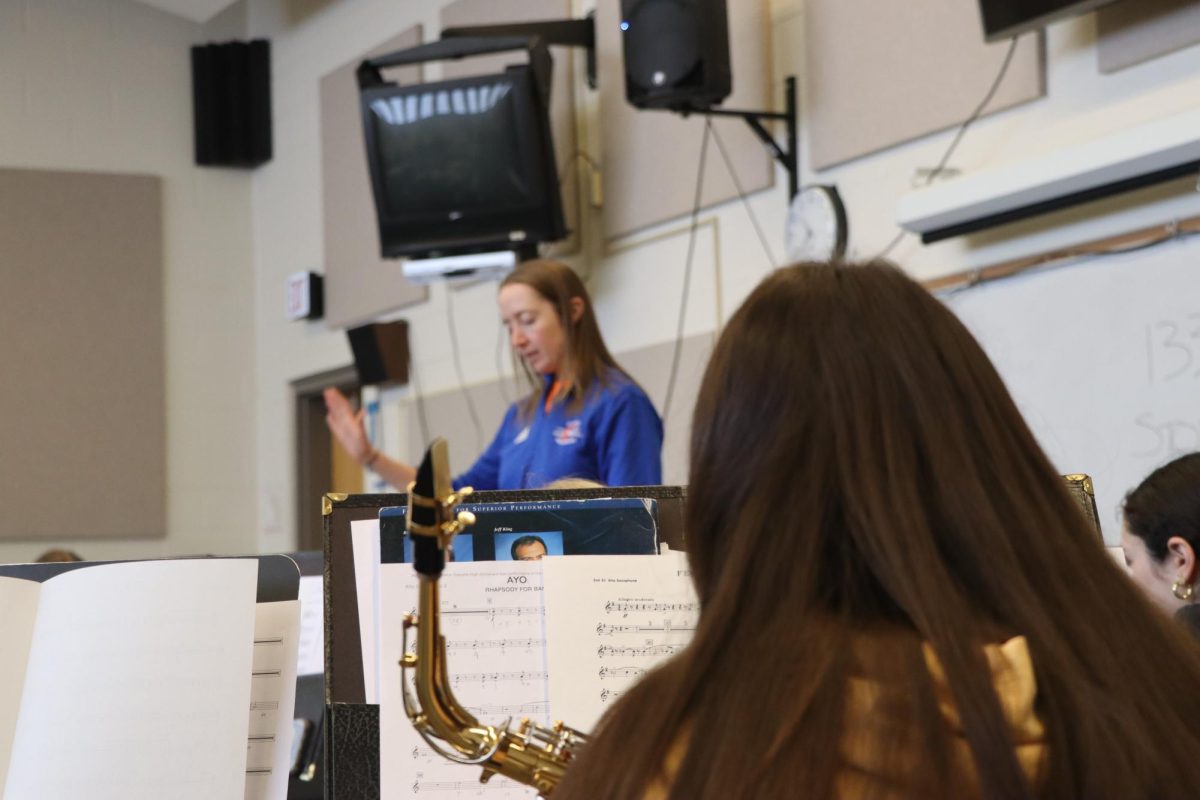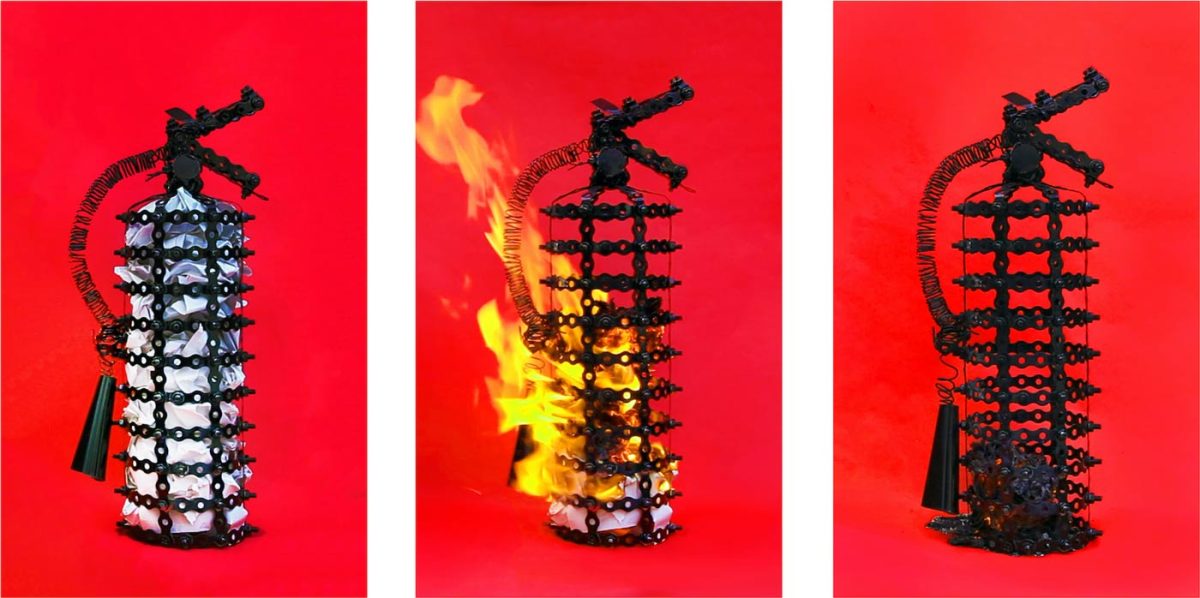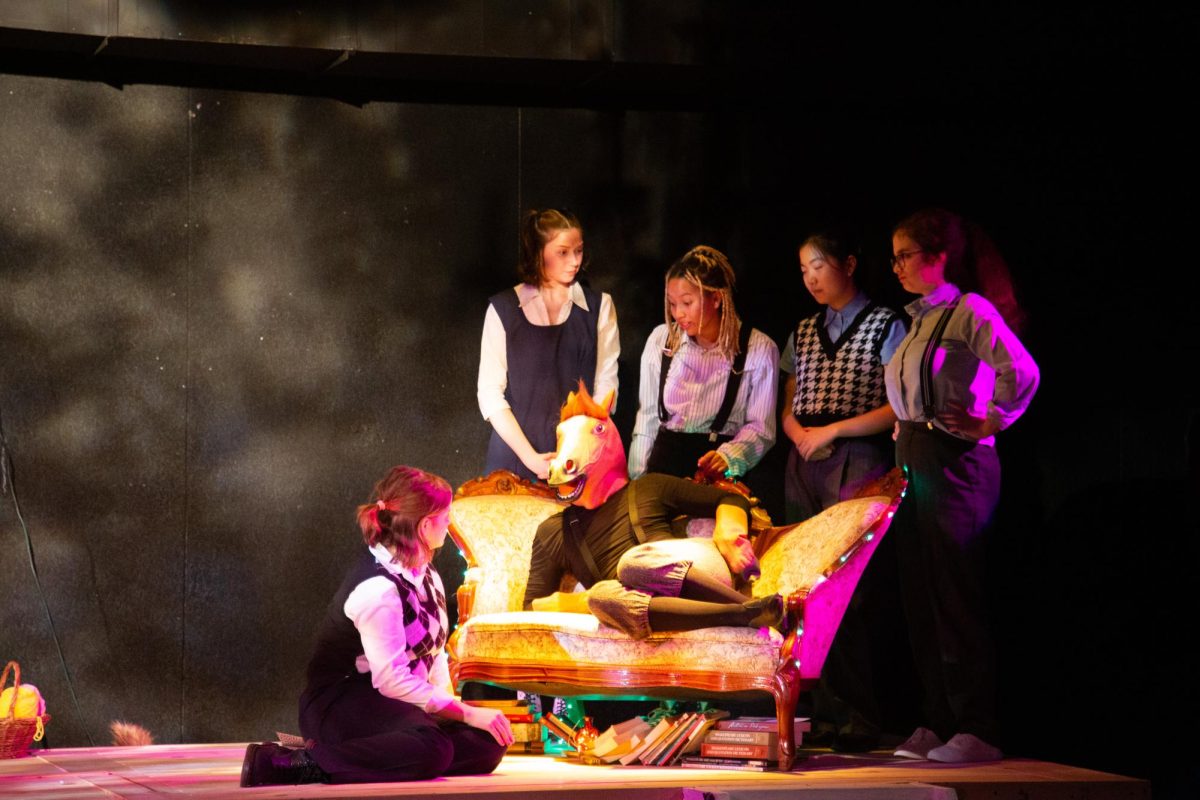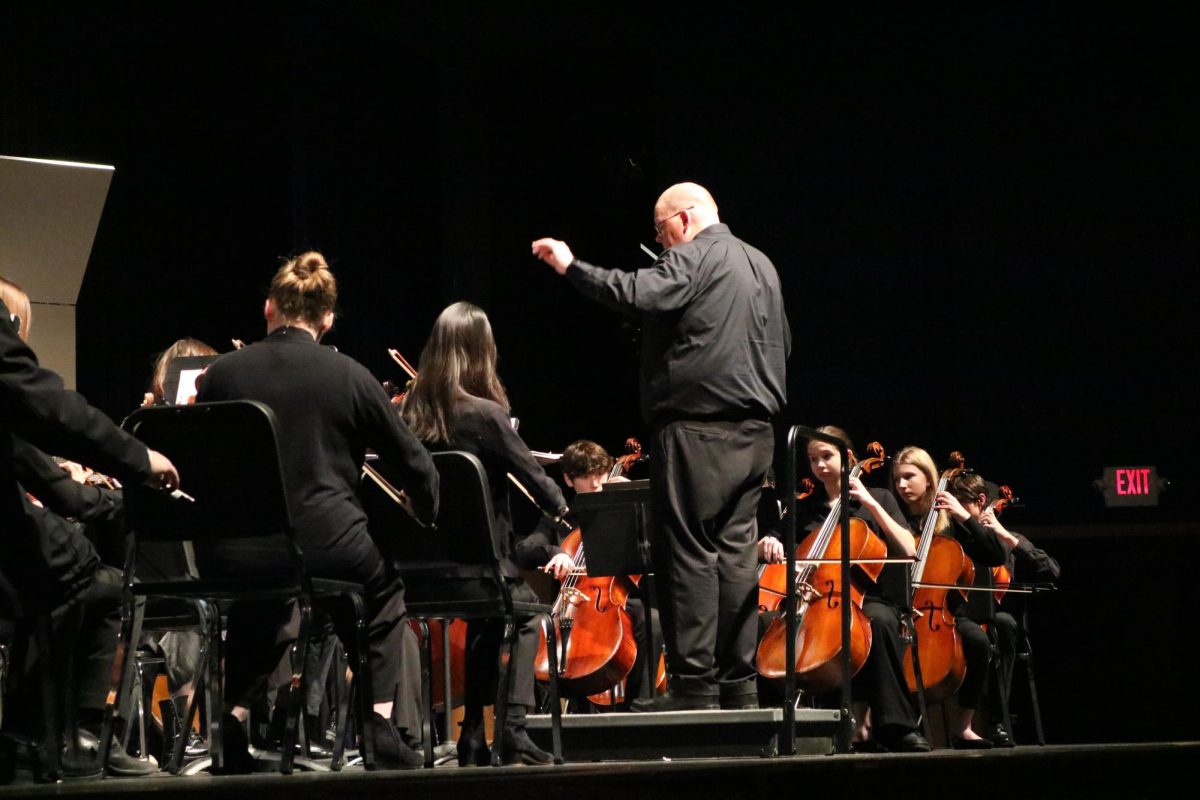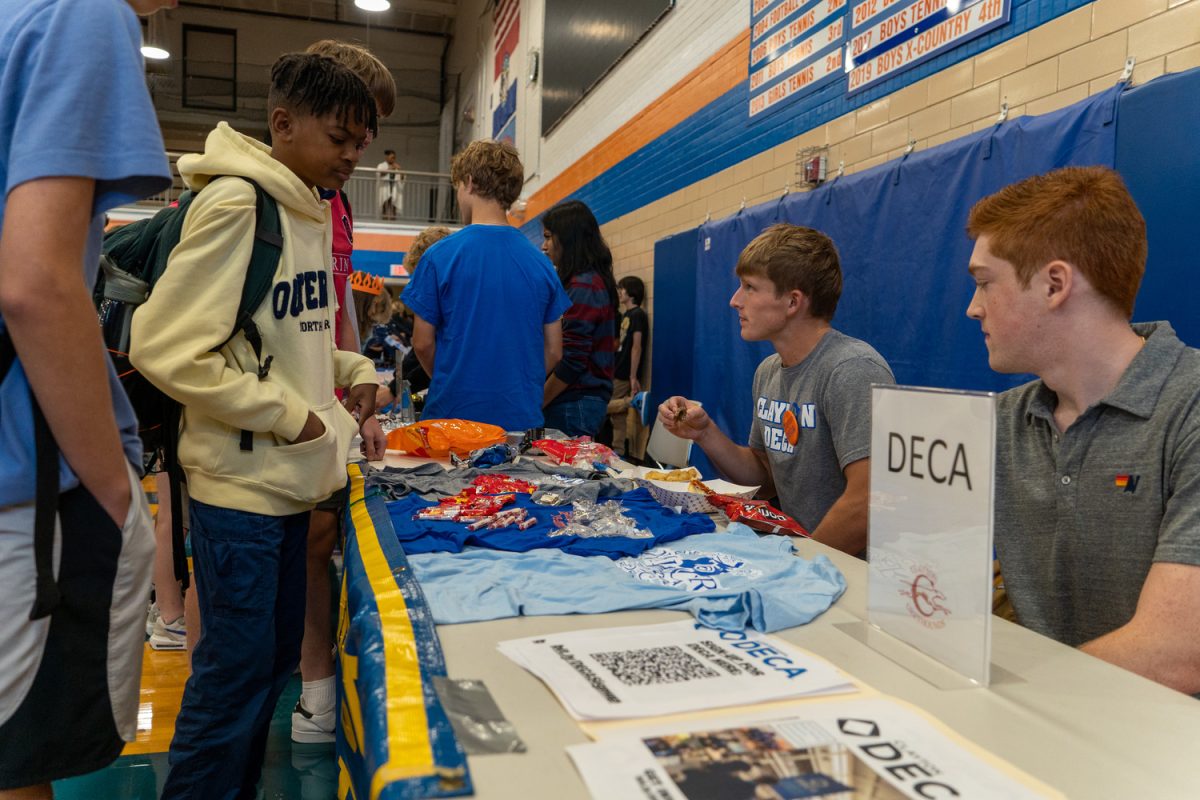By Ken Zheng
Next year, the CHS media classes will be putting in a combined effort to launch a website for news delivery to students and staff alike. Both the Globe and GNN are aiming to create a convergent website that will have both written and video news stories.
Globe Adviser Nancy Freeman thinks it is a good thing for a paper to look for ways to branch out and find other ways to cover news.
“First of all, that seems to be the trend nationwide,†Freeman said. “Print newspapers are failing. I think we’re at a point in our development that we’re going to see a lot more technology-driven news delivery. I think it’s a skill that’s important for anybody continuing in journalism to learn.â€
Freeman also thinks that there are many advantages to news delivered through the Internet.
“I think it’s exciting to do many more breaking news kind of things that we can’t do now,†Freeman said. “This year, when CHS had issues with the notes scrawled in the bathrooms and the computer thefts, both happened shortly after we had an issue that came out.â€
Therefore, it took three weeks before any of that news could be published by the Globe, a monthly paper.
“That’s not really news anymore,†Freeman said. “We’re really doing a sort of reaction story at that point. With a webpage we’re hoping to regulate on a regular basis, we’re hoping to do a lot more coverage of breaking news. We would also be able to get many more of the freshman and JV teams that we normally don’t cover onto the website. So I think it’s a skill people need to learn and a broader canvas for covering all types of stories we don’t cover at this moment.â€
The Broadcast News Class that brings GNN to CHS is already doing text copies of every story they air. This scripted version, like KSDK also does, will be put on the website along with streaming the video. The website would also ideally have many more slideshows and other types of interactive media.
Both Freeman and Christine Stricker are photojournalism teachers. Stricker also teaches Yearbook and Broadcast News.
When a photographer goes out to shoot events, they take anywhere between 10 and 100 photos, few of which are selected due to the space constraints.
“We can now take the best of their photos and create a slideshow that would show the best of their photography,†Freeman said. “I think there will be a much bigger venue for the photographers.â€
The website would ideally supplement the current media. Nearly everything published currently would also be online, but not vice versa. There will be places for people to comment on stories and there will also be interactive quizzes to give feedback and also submit online letters to the editor.
“I’m hoping the online paper will make things much more of a public forum than they are now which I think is pretty exciting,†Freeman said. “Our goal is to put something new on the website every day. We’re going to be working on it over the summer, and we hope that it will be out by the very first issue and that we can start putting things on it immediately.â€
For next year, the organization of both broadcast news and print news will stay the same.
“If this goes well, we’re thinking of making an online class, kind of like how photojournalism works for both yearbook and newspaper,†Freeman said. “We would have an online class that would pull things from both Globe and GNN. They would be the class that would produce it. The program next year is a pilot program. We’re trying to determine if we need to have that be its own separate entity yet. In the future it might be a separate class since it’s difficult to assign grades when students in the class are doing different things.â€
Stricker hopes to get approval for an online journalism class by 2010.
“I have so much respect for the original news medium of newspaper,†Stricker said. “ I personally absorb and get a more thorough understanding of the news from the newspaper rather than online. However, millions of people get their news online and as the popularity of reading the newspaper or watching the nightly news on TV decline, we must readjust our curriculum to move in the direction that is going to be most useful for our students in their future. With fewer TV and newspaper jobs and more online news jobs, we need to prepare our students for the utmost success. Many news outlets hire ‘backpack reporters,’ or people who can do everything: write, shoot photos or video, and work online. We need to train our students to be prepared for that.â€
The broadcast news class is currently experimenting with how they want to show video stories.
“Right now we are trying to write abbreviated script versions of our stories,†Stricker said. “ I like how that worked out. You can check it out at www.clayton.k12.mo.us/gnn. But if the Globe and GNN do a story on the same topic, perhaps we could combine those in a web feature package. We still have lots of questions to answer. Next year we’ll probably call our site the ‘beta’ version, meaning it’s the version that is still being tested and adjusted. Then when we can start our online news course, if it passes the board of education vote, we can adjust our curriculum to fit the convergence news model. After a trip to the new Journalism school at Mizzou, we got really excited about convergence. It’s definitely where journalism is headed, and Mizzou really has a great program that we’d like to shadow.â€
Next year’s Globe Co-Editor-in-Chief Nina Oberman went to a workshop at Webster University about newspapers’ changing to a web-based format.
“It really got me excited about the possibilities of online journalism,†Oberman said. “It will allow us to update so much more frequently with relevant information, which is a huge disadvantage with the Globe right now because we only put an issue out once a month. Now, if there were another threat written, we wouldn’t have to wait for weeks to do a follow-up type story. We can get the information online where it is accessible to students immediately. I think it will allow for more coverage of sports and specific games, which is something the Globe is lacking a lot in right now. The website will also be cool because people in both the school and the community will be able to blog about stories.â€
There are some essentials that Stricker knows a school-sponsored online paper should have.
“To make a student news website viable, it needs to be accessible, user-friendly, and current,†Stricker said. “It needs to be easy to get to, easy to navigate, and updated daily. If the readers know how to get to it but find that it’s not being updated daily, they will be less likely to go back to it again. This will pose a challenge for us since the Globe is accustomed to a monthly schedule and GNN to a weekly schedule. It will take a lot of effort and scheduling, but it can be done. I think having web-only video features is definitely a good idea.â€
Sophomore Justin Elliot signed up to be part of the managing team for the website next year. He is also a Globe reporter and an editor-in-training.
“As soon as I heard about the transition to the website I knew I wanted to be involved,†Elliot said. “The skills required to create and maintain a website are much more practical than those involved with designing a newspaper page. I am sure that I will be able apply the skills I learn from the website in many situations in life in the future. I think that it is great that we are transitioning to a website. It is important that the journalism curriculum at Clayton is in tune with society and is teaching students how to develop a medium that will actually be around when we get into the career market.â€
Stricker believes that CLAMO will stay a traditional yearbook.
“However, we are hoping to add multimedia features, such as a video yearbook made by our own students and perhaps some web features like an online scrapbook,†Stricker said. “So far the video yearbook has not sold well here in the past. We need to brainstorm a video yearbook model that will be attractive to CHS students. Video yearbook is also a class we are hoping to add in 2010-11.â€
Overall Freeman is very optimistic about next year’s launch.
“We’re really excited about this addition,†Freeman said. “We’re hoping that people will go and look and we want to make it as inviting as we can so that there’s new information for people to access.â€
CHS media plans new online format
Globe Staff
•
July 30, 2009
Leave a Comment
Donate to The Globe
$150
$2000
Contributed
Our Goal
Your donation will support the student journalists of Clayton High School. Your contribution will allow us to purchase equipment and cover our annual website hosting costs.

